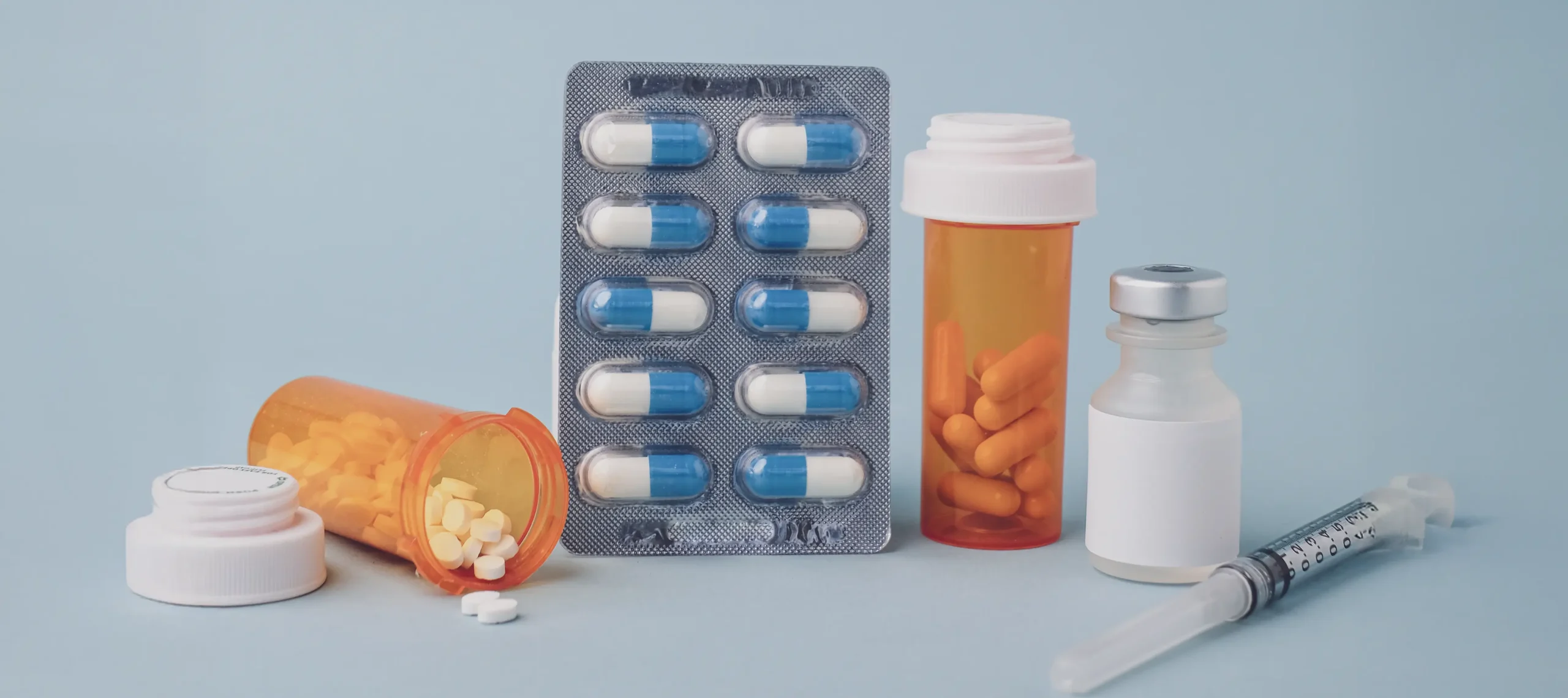Corticosteroids are widely used medicines that can be life-changing—sometimes even life-saving. Whether prescribed for asthma, arthritis, allergies, or autoimmune conditions, they’re often the go-to for reducing inflammation and controlling the immune response. But as with many powerful medications, there’s a trade-off. One of the more serious and lesser-known side effects of corticosteroid use is the increased risk of developing cataracts, particularly posterior subcapsular cataracts (PSCs). If you’ve ever taken corticosteroids or are currently on them, it’s important to understand how they may affect your eye health.
In this article, we’ll explore what corticosteroids are, how they work, how they may lead to cataract formation, and what you can do to protect your vision. Whether you’re a long-term steroid user or simply curious about the risks, this guide aims to give you clear, accessible information—without the jargon.
What Are Corticosteroids?
Let’s start with the basics. Corticosteroids are synthetic versions of hormones produced by your adrenal glands, which sit just above your kidneys. These hormones help regulate a wide range of functions, including metabolism, immune response, and inflammation. When you take corticosteroids as medication, you’re essentially boosting or mimicking these natural hormones to control excessive immune reactions and inflammation.
Corticosteroids come in many forms—tablets, injections, creams, inhalers, and eye drops. Each type has its own set of uses, strengths, and potential side effects. Oral corticosteroids like prednisolone are often prescribed for chronic conditions such as rheumatoid arthritis and lupus. Inhaled steroids are a staple for managing asthma, while topical creams are commonly used for skin conditions like eczema.
Despite their usefulness, corticosteroids don’t discriminate when it comes to side effects. Their systemic nature means they can affect multiple organs and tissues in the body—including your eyes.

Understanding Cataracts: A Quick Refresher
Before diving into the connection with corticosteroids, let’s refresh your memory on what cataracts actually are. A cataract is the clouding of the eye’s natural lens, which sits behind the iris and the pupil. The lens is usually clear and flexible, allowing light to pass through and focus properly on the retina at the back of the eye.
When a cataract forms, the proteins in the lens start to clump together, making the lens cloudy and stiff. This leads to blurry vision, sensitivity to light, and sometimes even double vision. Cataracts can affect one or both eyes, though they don’t spread from one to the other. They’re most commonly linked to ageing, but other risk factors include diabetes, smoking, prolonged UV exposure—and, as you’ve probably guessed by now, corticosteroid use.
The Link Between Corticosteroids and Cataracts
So how exactly do corticosteroids contribute to cataract formation? Researchers and ophthalmologists have been studying this question for decades, and while the full picture is still coming into focus, there’s strong evidence to support a connection—particularly with posterior subcapsular cataracts.
PSCs form at the back of the lens, directly in the path of light entering the eye. This type of cataract is especially problematic because it can interfere with reading vision and cause glare in bright environments, even in the early stages. Unlike age-related cataracts, which develop slowly over many years, PSCs tend to progress more rapidly and can significantly impair vision in a relatively short time.
Mechanisms Behind the Risk
You might be wondering how a drug designed to reduce inflammation can end up clouding your vision. The truth is, the exact mechanisms aren’t entirely understood, but several theories have emerged:
1. Altered Protein Metabolism in the Lens
The lens of the eye is made up largely of specialised proteins called crystallins, which need to remain perfectly structured and transparent for vision to remain sharp. These proteins are produced, maintained, and recycled throughout a person’s life through carefully regulated metabolic processes. Corticosteroids are thought to disrupt these normal activities by interfering with the mechanisms that control protein synthesis and breakdown. This can cause the proteins to accumulate abnormally, resulting in a disorganised arrangement that affects the clarity of the lens.
Over time, this disrupted protein balance can lead to the formation of microscopic clumps within the lens. These clumps scatter incoming light, creating the cloudy, hazy vision that is characteristic of cataracts. It’s particularly problematic in the posterior subcapsular region of the lens, where this clumping tends to occur in corticosteroid users. Because this area is directly in the path of incoming light, even small changes in protein arrangement can significantly impact visual acuity, especially when reading or looking at bright lights.
In addition, the lens has limited ability to regenerate or cleanse itself once protein damage occurs. While other tissues in the body might recover from temporary metabolic disruptions, the lens lacks blood supply and relies heavily on internal cellular systems to maintain clarity. Corticosteroids can impair these systems, making it difficult for the lens to recover from even minor damage. This creates a cumulative effect over time, particularly with long-term steroid use, making cataract development more likely as protein damage builds up.
2. Oxidative Stress and Free Radical Damage
Oxidative stress occurs when there’s an imbalance between harmful molecules called free radicals and the body’s ability to neutralise them with antioxidants. In the eye, this balance is crucial, as the lens is constantly exposed to light and oxygen—both of which can trigger free radical production. Corticosteroids are believed to reduce the eye’s natural defences against oxidative stress by lowering antioxidant activity or altering the metabolic environment in ways that promote the generation of reactive oxygen species.
The impact of free radical damage on the lens is profound. These unstable molecules attack the structural components of lens cells, including lipids, DNA, and most notably, crystallin proteins. This oxidative assault can cause the proteins to unfold, stick together, or lose their transparency, all of which contribute to cataract formation. Once proteins in the lens are damaged by oxidation, they are very difficult to repair or replace due to the eye’s limited regenerative capacity. This makes oxidative damage a key player in the development of corticosteroid-induced cataracts.

What makes this mechanism even more concerning is the silent, progressive nature of oxidative stress. You won’t feel pain or see symptoms early on, but the damage accumulates gradually. When corticosteroids are taken over months or years, especially in high doses, they may accelerate this damage by weakening your internal antioxidant systems. As a result, patients who are otherwise healthy can still develop cataracts purely due to long-term exposure to oxidative stress triggered by corticosteroid treatment.
3. Inhibition of Lens Epithelial Cell Function
The epithelial cells of the lens play a central role in maintaining its structure and transparency. These cells are responsible for managing the internal environment of the lens, facilitating the transport of nutrients, and supporting the repair of minor cellular injuries. They also help in the production of new lens fibres, which are critical for maintaining clarity over time. When corticosteroids inhibit the function of these cells, the lens becomes less capable of performing these essential tasks.
One of the most concerning effects of corticosteroids is the suppression of cell proliferation and regeneration within the lens. Epithelial cells must divide and function properly to maintain the health of the lens, particularly in response to oxidative stress, physical trauma, or UV damage. When corticosteroids interfere with these processes, they can essentially weaken the lens’s first line of defence. This can result in early-onset degenerative changes and reduce the lens’s resilience to everyday wear and tear.
Moreover, the inhibition of epithelial cell activity can also impact the fluid and ionic balance within the lens, further contributing to cloudiness. These cells help regulate ion channels and fluid flow, which is crucial for maintaining the optical properties of the lens. Disruptions in this balance can lead to swelling, stiffening, and opacification—key features of cataract formation. So, while the effect may not be visible immediately, prolonged corticosteroid use subtly undermines the lens’s ability to maintain clarity, setting the stage for cataract development over time.
Duration and Dosage Matter
One of the key things to understand is that not all corticosteroid use leads to cataracts. The risk depends heavily on the dose, duration, and method of administration. Long-term use of systemic corticosteroids—such as oral tablets or injections—is most strongly associated with cataract development. In contrast, short-term or low-dose use may carry a much lower risk.
For example, someone taking high-dose oral prednisone daily for several months is far more likely to develop PSCs than someone who uses a topical cream occasionally. Inhaled corticosteroids, while less potent systemically, can still pose a risk if used in high doses over a long period—something especially relevant for people with chronic asthma or COPD.
The cumulative dose over time seems to be the most important factor. In many studies, patients who developed cataracts had been on steroids for several years, sometimes even decades. This makes ongoing monitoring absolutely essential if you’re using these medications long-term.
Who’s Most at Risk?
While anyone taking corticosteroids can potentially develop cataracts, certain groups are more vulnerable than others:
- Children and Adolescents: The younger the patient, the greater the concern. Developing eyes are more sensitive to corticosteroids, and long-term use in childhood can lead to earlier onset cataracts. This is particularly important in cases where children are prescribed steroids for conditions like juvenile arthritis or severe asthma.
- People with Autoimmune Conditions: Conditions like lupus, rheumatoid arthritis, and vasculitis often require prolonged courses of corticosteroids. These patients not only face a higher cumulative dose but also may have other risk factors, such as inflammation that affects the eyes directly.
- Organ Transplant Recipients: To prevent rejection, transplant patients are often prescribed high-dose steroids for extended periods. This makes them one of the highest-risk groups for developing PSCs and other steroid-induced complications.
- Individuals with a Family History of Cataracts: Genetics can influence how your body metabolises steroids and how resilient your lens is to oxidative stress. If cataracts run in your family, your threshold for damage may be lower, making regular eye check-ups even more critical.
Signs You Shouldn’t Ignore
Cataracts often develop slowly, and in the early stages, you might not notice any changes at all. But once they begin to affect your vision, the symptoms can quickly become disruptive. Here are some common signs to watch for if you’re taking corticosteroids:
- Blurry or cloudy vision
- Difficulty seeing in bright light or glare
- Halos around lights, especially at night
- Colours appearing faded or yellowed
- Trouble reading or seeing detail up close

If you experience any of these symptoms, it’s worth getting your eyes examined by an optometrist or ophthalmologist, especially if you’ve been on corticosteroids for any length of time.
Preventative Strategies and What You Can Do
If corticosteroids are essential for your health, it doesn’t mean cataracts are inevitable. There are several practical steps you can take to reduce your risk and protect your vision.
- Use the Lowest Effective Dose: Always work with your doctor to find the lowest effective dose for the shortest duration possible. If your symptoms are well-controlled, ask whether it’s time to taper down. Sometimes, alternative treatments can be introduced to reduce your reliance on steroids.
- Consider Non-Steroidal Alternatives: Depending on your condition, non-steroidal anti-inflammatory drugs (NSAIDs) or disease-modifying treatments may be available. These might not replace steroids entirely, but they can help minimise your exposure.
- Regular Eye Examinations: If you’re on corticosteroids long-term, you should be having routine eye exams—ideally once a year, or more often if advised by your specialist. Early detection of cataracts can allow for prompt treatment or monitoring before they interfere with daily life.
- Protect Your Eyes from UV Light: Exposure to ultraviolet light can accelerate cataract formation, especially when combined with corticosteroid use. Wear sunglasses that block 100% of UVA and UVB rays, even on cloudy days.
- Maintain a Healthy Lifestyle: Smoking, poor diet, and uncontrolled blood sugar can all increase the risk of cataracts. Eating a diet rich in antioxidants (think leafy greens, carrots, and berries), staying hydrated, and avoiding tobacco can help protect your eyes.
Treatment Options If Cataracts Develop
If you do develop cataracts while on corticosteroids, the good news is that treatment is very effective. Cataract surgery is one of the most common and successful procedures in medicine. It involves removing the cloudy lens and replacing it with a clear artificial one, usually under local anaesthetic.
The decision to proceed with surgery is typically based on how much the cataract is affecting your vision and your daily life. In cases of PSCs caused by steroids, surgery can often restore clear vision, although ongoing corticosteroid use may require additional eye monitoring post-operatively.
Final Thoughts
Corticosteroids are powerful tools in modern medicine, offering relief from a wide range of painful and potentially debilitating conditions. But with that power comes responsibility—especially when it comes to long-term side effects like cataracts. Understanding the risks allows you to make informed choices about your treatment, work closely with your healthcare providers, and take proactive steps to protect your sight.
If you’re currently on corticosteroids, don’t panic—but do stay vigilant. Keep up with your eye exams, report any vision changes promptly, and have regular conversations with your doctor about the ongoing need for steroids. By staying informed and engaged, you can strike a balance between managing your health condition and preserving your vision for the future. If you’re concerned about how corticosteroid use might be affecting your eyes, you’re very welcome to contact us at the London Cataracts Centre to arrange a consultation with one of our expert cataract surgeons. We’re here to help you make sense of your options and support you every step of the way.

